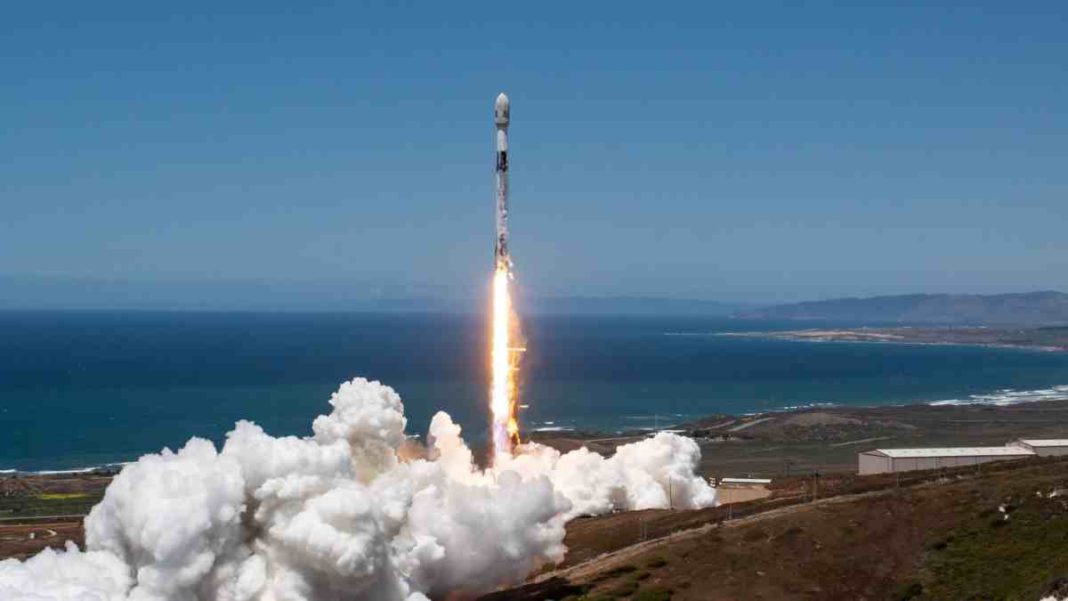UNITED STATES: SpaceX, the pioneering aerospace company founded by Elon Musk, is preparing for another exciting launch of its Starlink internet satellites.
On Wednesday morning (May 31), a Falcon 9 rocket will soar into the sky, carrying 52 Starlink spacecraft into orbit.
SpaceX will broadcast the event live, allowing space enthusiasts to witness the action firsthand.
Scheduled to lift off from California’s Vandenberg Space Force Base at 2:02 a.m. EDT (0602 GMT; 11:02 p.m. on May 30 local California time), the Falcon 9 rocket will carry the payload of 52 Starlink satellites.
These satellites aim to provide global broadband coverage and improve internet access in remote areas.
If all goes according to plan, the first stage of the Falcon 9 rocket will return to Earth approximately 8 minutes and 45 seconds after launch.
The booster will make a vertical touchdown on the SpaceX drone ship “Of Course I Still Love You,” stationed in the Pacific Ocean, employing its remarkable reusability.
This booster holds an impressive record, having completed 14 successful launches and landings, including missions such as Crew-1 and Crew-2, which transported astronauts to the International Space Station (ISS) for NASA.
Meanwhile, the Falcon 9’s upper stage will continue its journey, carrying the 52 Starlink satellites to low Earth orbit. Approximately 17.5 minutes after launch, the rocket will deploy the satellites, expanding the ever-growing Starlink constellation.
According to Jonathan McDowell, an astrophysicist and satellite tracker, SpaceX has already launched nearly 4,500 Starlink satellites, with over 4,100 currently active.
However, this is just the beginning, as SpaceX plans to launch many more in the upcoming weeks and months.
The company has obtained permission to send 12,000 Starlink satellites into orbit and has also applied for approval to launch an additional 30,000 satellites, further bolstering its global internet network.
Interestingly, Wednesday’s Starlink launch coincides with the return of a SpaceX Dragon capsule.
The spacecraft, nicknamed Freedom, recently completed the private Ax-2 astronaut mission in collaboration with Houston-based Axiom Space.
After undocking from the ISS on Tuesday morning (May 30), Freedom splashed down off the coast of Florida on Tuesday at 11:05 p.m. EDT (0305 GMT on May 31).
SpaceX continues to make remarkable strides in revolutionizing space technology and connectivity.
As the launch date approaches, space enthusiasts and eager viewers can tune in to witness the spectacle of the Falcon 9 rocket ascending into the night sky, carrying humanity’s hopes for improved global internet access.
Also Read: UAE Unveils Ambitious 13-Year Space Mission to Explore Asteroid Belt



